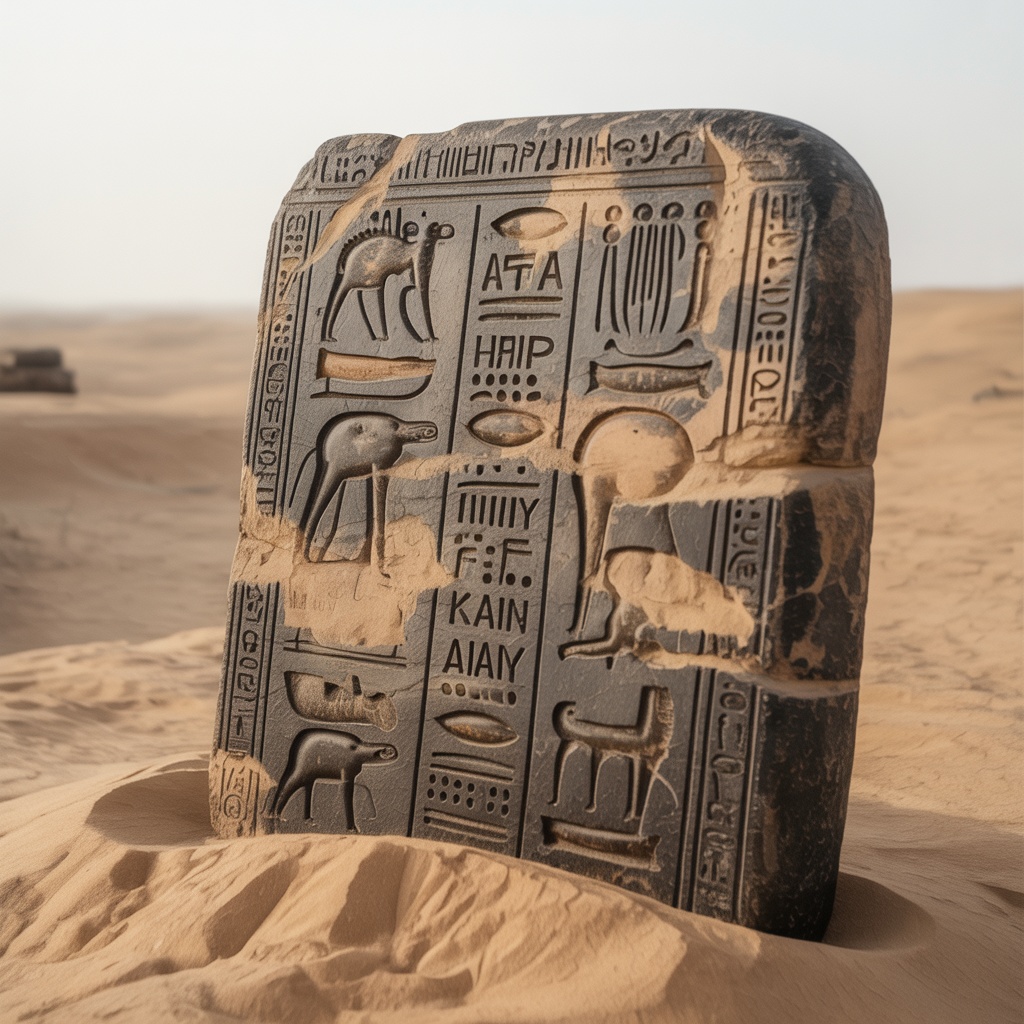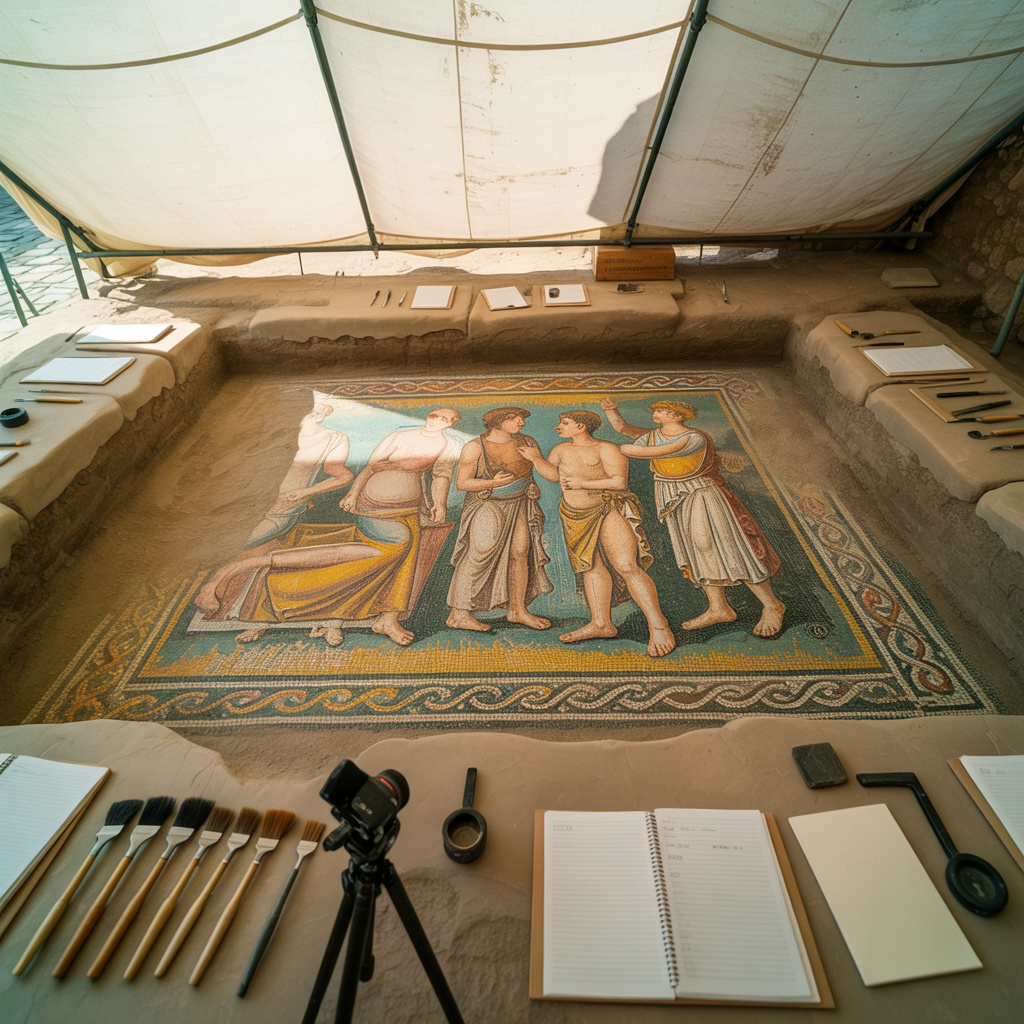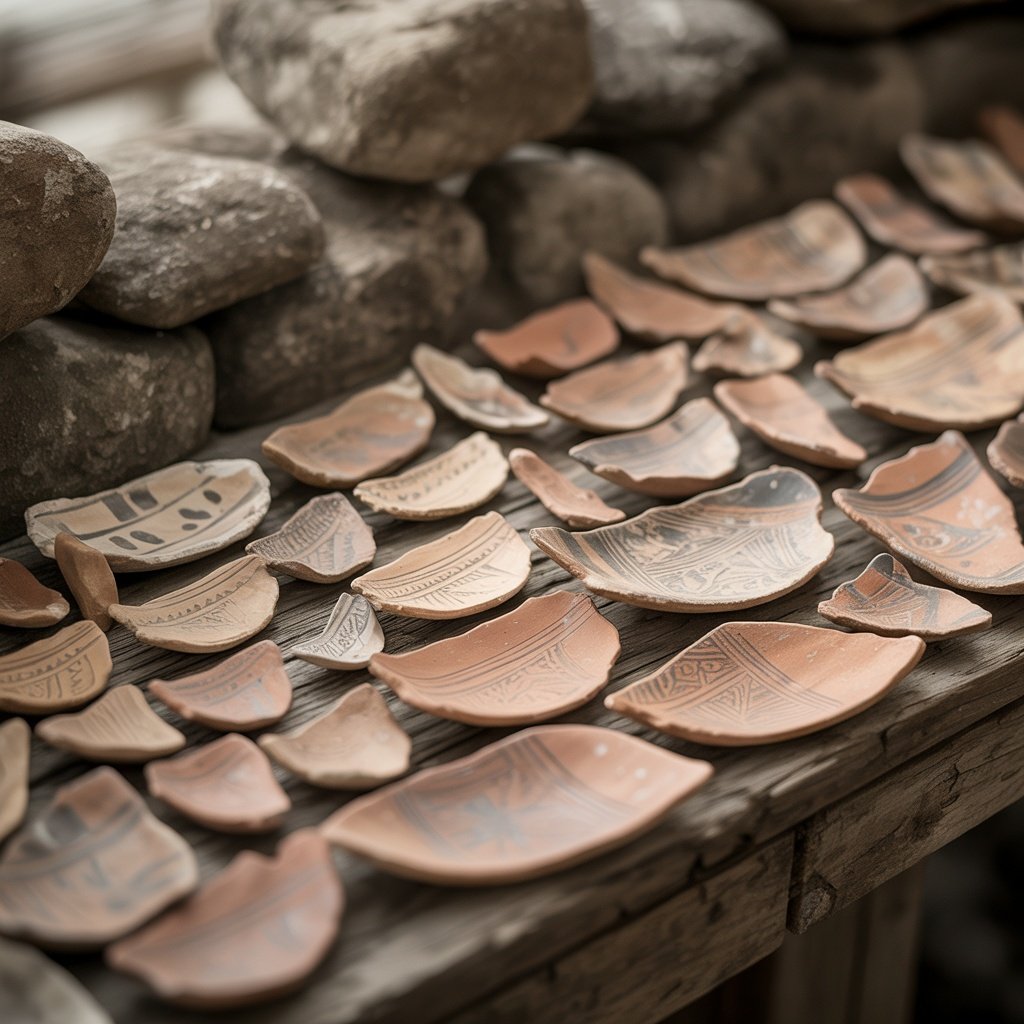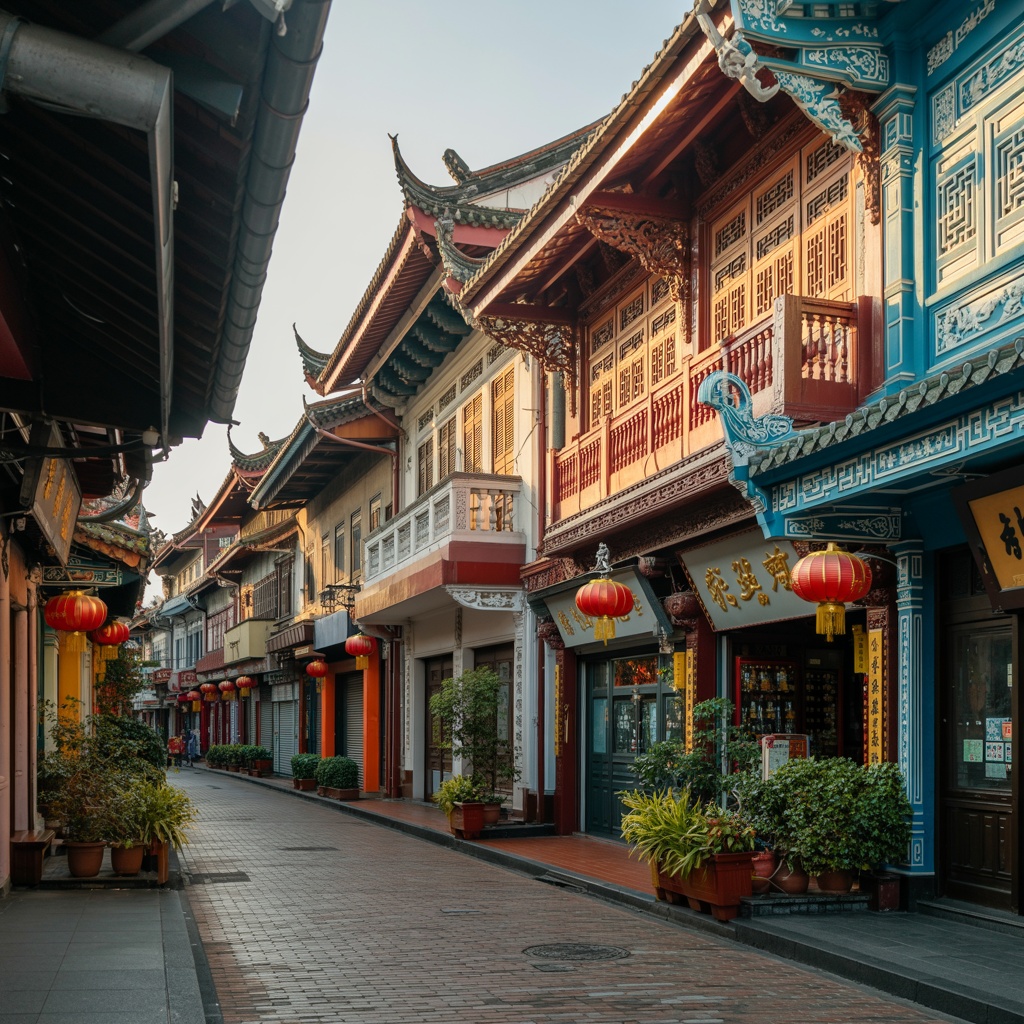Singapore's Chinatown represents one of the most historically layered and culturally significant heritage districts in Southeast Asia, preserving architectural, archaeological, and cultural evidence spanning from the 1820s Chinese immigrant settlement through contemporary urban development. This compact district contains extraordinary density of heritage attractions: ancient temples housing archaeological artefacts, meticulously preserved shophouses revealing urban living conditions across nearly two centuries, underground archaeological sites documenting pre-colonial and colonial-era activities, museums interpreting Chinese diasporic heritage, and vibrant street markets maintaining commercial traditions linking contemporary Singapore to historical trading patterns.
As cultural heritage tourism specialists with extensive experience organising urban archaeology expeditions, we recognise Chinatown as exceptional for its visible and subsurface archaeological layers, successful heritage conservation despite intense development pressures, and continuing evolution as a living neighbourhood rather than a static museum district. This comprehensive guide explores Chinatown's historical development, major heritage attractions, archaeological discoveries, cultural activities, and practical visiting information for travellers seeking authentic engagement with Singapore's Chinese heritage and urban archaeological landscape.
Historical Development: From Swamp to Urban Chinatown
Understanding Chinatown's attractions requires appreciating the district's historical evolution from malarial swampland through immigrant settlement area to heritage conservation district—a transformation documented through archaeology, architecture, and archival materials.
The Raffles Town Plan and Chinese Settlement (1820s-1840s)
When Sir Stamford Raffles established British Singapore in 1819, the area south of the Singapore River designated for Chinese settlement consisted primarily of mangrove swamp requiring extensive landfill and drainage work. Raffles' 1822 town plan allocated this zone to Chinese immigrants, who were already arriving in substantial numbers attracted by Singapore's economic opportunities.
Early Chinese settlers—predominantly men from southern Chinese provinces including Fujian, Guangdong, and Hainan—established clan associations, dialect group organisations, and mutual aid societies that provided social support, employment connections, and cultural continuity. These organisations built temples, meeting halls, and residential compounds that formed the architectural foundation of Chinatown's heritage landscape.
Archaeological excavations conducted during modern development projects have revealed artefacts from this early settlement period: Chinese ceramics (including export porcelain and everyday pottery), coins, tools, building materials, and food remains documenting immigrant diet and material culture. These subsurface archaeological deposits complement above-ground architectural evidence, providing comprehensive documentation of 19th-century urban development.
Coolie Trade and Economic Growth (1850s-1920s)
The mid-to-late 19th century saw massive expansion of Chinese immigration driven by economic opportunities in British Malaya's tin mines, rubber plantations, and trading enterprises. Singapore functioned as the primary transhipment point for Chinese coolies (indentured labourers) heading to work throughout Southeast Asia, creating enormous demand for accommodation, services, and commercial facilities in Chinatown.
This period witnessed intensive construction of the shophouse blocks that characterise Chinatown's streetscape today. These typically two or three-storey structures combined street-level commercial premises with upper-floor residential spaces, maximising land use in the densely populated district. Archaeological investigations of shophouse foundations have revealed construction techniques, drainage systems, and refuse deposits illuminating living conditions during this rapid urbanisation period.
The population density reached extraordinary levels—estimates suggest as many as 2,000 people per hectare in some Chinatown blocks during the early 20th century, making it one of the world's most crowded urban areas. This crowding, combined with inadequate sanitation infrastructure, created serious health challenges documented through both archival public health reports and archaeological evidence including disease-related skeletal remains in cemetery excavations.
Modernisation and Heritage Conservation (1960s-Present)
Post-independence Singapore's rapid modernisation initially threatened Chinatown's survival. Development plans proposed wholesale demolition of "slum" shophouse districts to construct modern high-rise housing and commercial buildings. However, growing recognition of heritage value led to revised approaches emphasising conservation alongside development.
In 1986, the Urban Redevelopment Authority designated large portions of Chinatown as conservation areas, establishing regulatory frameworks protecting historic buildings whilst enabling adaptive reuse for contemporary functions. This conservation programme saved hundreds of shophouses from demolition, though debates continue regarding appropriate balance between preservation and development, authenticity versus commercialisation, and whose heritage receives priority in conservation decisions.
Major Heritage Attractions and Archaeological Sites

Chinatown's heritage attractions range from above-ground architectural landmarks to subsurface archaeological sites, providing multi-layered understanding of Chinese settlement in Singapore.
Sri Mariamman Temple: Unexpected Hindu Heritage in Chinatown
Singapore's oldest Hindu temple (established 1827) stands incongruously within Chinatown, reflecting the district's more complex ethnic history than the "Chinatown" label suggests. The temple's presence documents how Raffles' ethnic zoning never completely segregated communities, with Indians (particularly traders and moneylenders) living and working alongside Chinese residents.
The temple's Dravidian architectural style—featuring a towering gopuram covered with colourful Hindu deity sculptures—contrasts dramatically with surrounding Chinese shophouses. This architectural juxtaposition materially represents Singapore's multicultural character. The temple functions as both active place of worship and heritage attraction, hosting the annual Theemithi (fire-walking) festival that draws thousands of participants and spectators.
Buddha Tooth Relic Temple and Museum
This substantial Buddhist temple complex, completed in 2007, represents contemporary religious architecture incorporating traditional Chinese design elements. Whilst architecturally new, the temple houses significant archaeological and religious artefacts including hundreds of Buddha images from various Asian cultures and periods, sacred relics, and extensive displays explaining Buddhist art and material culture.
The temple's museum collections include ancient Buddhist texts, ritual implements, ceramics, and sculptures providing art historical and archaeological context for understanding Buddhism's spread throughout Asia. The building itself demonstrates how traditional architectural principles (symmetry, hierarchical spatial organisation, auspicious orientations) can be adapted to modern construction techniques and functions.
Thian Hock Keng Temple: Singapore's Oldest Chinese Temple
Built between 1839 and 1842, Thian Hock Keng Temple represents Singapore's oldest and most architecturally significant Chinese temple. Dedicated to Mazu, the Chinese goddess protecting sailors and fishermen, the temple's construction by Hokkien immigrants reflects gratitude for safe passage from China and seeks continued protection for maritime commerce.
The temple's architectural and decorative elements were imported from China: granite pillars, ceramic roof tiles, carved stone dragons, and iron railings shipped from Fujian province. These materials document 19th-century trade networks and demonstrate how immigrant communities maintained cultural connections to ancestral homelands through material culture.
Archaeological significance extends beyond the structure itself: the temple complex contains inscribed stone tablets documenting donors and construction history, ancestral tablets recording family genealogies, and ritual objects used in traditional Chinese religious practices. These materials function as primary historical sources documenting Chinese immigrant society in 19th-century Singapore.
Chinatown Heritage Centre
Located in a restored shophouse block on Pagoda Street, the Chinatown Heritage Centre provides immersive interpretation of immigrant life through recreated living spaces, original artefacts, oral history recordings, and interpretive displays. The centre documents the often harsh conditions faced by Chinese immigrants: cramped accommodation, dangerous occupations, limited economic opportunities, and social challenges.
The museum's strength lies in presenting multiple immigrant experiences: wealthy merchants in spacious upper-floor quarters versus coolies in communal sleeping spaces, successful entrepreneurs versus struggling labourers, men vastly outnumbering women in early immigrant cohorts, and various dialect groups maintaining distinct cultural practices whilst sharing common Chinese identity.
Underground Archaeological Sites
Several archaeological excavations in Chinatown have revealed subsurface deposits documenting urban development across nearly two centuries. The most significant excavation occurred at the Empress Place site (now the Asian Civilisations Museum) where archaeologists uncovered pre-Raffles Malay and Orang Laut settlements, early Chinese immigrant artefacts, colonial-period materials, and World War II deposits—a complete stratigraphic sequence documenting Singapore's development.
Additional excavations at various Chinatown locations during building projects have recovered structural remains, refuse pits, wells, and material culture assemblages. These findings provide essential data about everyday life aspects poorly documented in historical records: diet (through animal bones and food remains), health (through skeletal analysis), manufacturing (through craft waste), and consumption patterns (through imported goods).
Shophouse Architecture and Urban Form

Chinatown's shophouses represent one of Southeast Asia's most distinctive architectural typologies, combining Chinese spatial concepts, European construction techniques, and tropical climate adaptations into a unique vernacular architecture.
Shophouse Typology and Evolution
Singapore shophouses evolved through several recognisable styles reflecting changing aesthetic preferences, building regulations, and economic circumstances. Early Style shophouses (1840s-1900s) featured simple designs with minimal ornamentation. Transitional Style (1900s-1930s) introduced decorative elements including ornate plasterwork, ceramic tiles, and painted motifs. Art Deco Style (1930s-1960s) incorporated modernist geometric patterns and streamlined forms.
Common features across styles include:
- Five-foot ways: Covered walkways mandated by regulations providing continuous pedestrian shelter along street fronts
- Narrow frontages: Deep building plots with narrow street facades, maximising the number of properties along valuable commercial streets
- Internal courtyards: Open-air spaces (air wells) providing ventilation and light to interior rooms
- Timber construction: Interior structures primarily using timber framing, floors, and partitions despite masonry exteriors
- Hybrid decoration: Eclectic combination of Chinese, European, and Malay decorative motifs reflecting multicultural influences
Conservation Challenges and Approaches
Shophouse conservation faces significant challenges: timber deterioration requiring replacement, modern safety/accessibility requirements conflicting with historical layouts, economic pressures favouring demolition over expensive restoration, and debates about appropriate adaptive reuse balancing heritage preservation with viable contemporary functions.
Successful conservation requires balancing authenticity (preserving historical character and materials) with adaptation (enabling buildings to serve contemporary needs). Conservation guidelines specify which elements must be preserved (facades, roof forms, key decorative features) and where modifications are acceptable (internal layouts, modern systems, accessibility improvements).
Cultural Activities and Living Heritage
Beyond static architectural heritage, Chinatown maintains living cultural traditions through markets, festivals, and community activities connecting contemporary practices to historical patterns.
Traditional Markets and Street Commerce
Street markets along Pagoda Street, Temple Street, and Smith Street sell goods reflecting both traditional commerce and tourist demand: Chinese medicines and herbs, tea, calligraphy supplies, lanterns, incense, traditional clothing, and tourist souvenirs. Whilst increasingly tourist-focused, these markets maintain commercial traditions with roots in Chinatown's 19th-century development as Singapore's primary Chinese commercial district.
The Chinatown Complex wet market on the second floor of a modern building preserves traditional food marketing practices: vendors selling fresh produce, meat, seafood, and prepared foods in an environment little changed functionally from historical outdoor markets, though relocated to modern structures with better sanitation and infrastructure.
Festival Celebrations
Annual Chinese festivals transform Chinatown's streets with decorations, performances, and special activities. Chinese New Year (January-February) sees elaborate street decorations, festive markets, cultural performances, and massive crowds celebrating the lunar new year. Mid-Autumn Festival (September-October) features lantern displays and mooncake sales. Hungry Ghost Festival (July-August) involves traditional Chinese religious practices including street-side offerings and opera performances.
These festivals demonstrate how heritage districts function as sites for living cultural practices rather than merely preserving historical architecture. The festivals connect contemporary Singaporean Chinese to traditional practices whilst adapting to modern urban contexts and multicultural audiences.
Traditional Crafts and Trades
Some traditional craftspeople maintain workshops in Chinatown: calligraphers, seal carvers, incense makers, and traditional medicine practitioners. Whilst their numbers have declined dramatically compared to historical periods when such trades dominated Chinatown commerce, their continued presence maintains tangible connections to traditional Chinese crafts and knowledge systems.
Several organisations work to preserve traditional crafts through apprenticeship programmes, workshops, and documentation projects, recognising that intangible cultural heritage (skills, knowledge, practices) requires active transmission to survive, unlike architectural heritage which can be passively preserved through conservation regulations.
Food Heritage and Culinary Archaeology

Chinatown's food heritage represents an often-overlooked aspect of cultural archaeology, with culinary traditions, restaurant establishments, and food-related material culture documenting immigrant dietary practices and cultural adaptations.
Historical Food Establishments
Several Chinatown restaurants and food stalls have operated for decades, maintaining traditional recipes and preparation methods. These establishments function as living museums preserving culinary heritage through continued practice rather than museological display. Popular destinations include traditional dim sum restaurants, noodle shops, and dessert establishments serving recipes passed through family generations.
Archaeological Evidence of Diet
Archaeological excavations in Chinatown have recovered food-related artefacts illuminating historical diet: animal bones indicating meat consumption patterns, plant remains preserved in anaerobic deposits, ceramic food storage vessels, cooking implements, and dining wares. Analysis of these materials reveals how immigrant Chinese adapted traditional diets to available ingredients in Southeast Asia, creating fusion cuisines combining Chinese culinary traditions with Malay and Indian influences.
Hawker Culture and Street Food
Chinatown Complex and Maxwell Food Centre preserve Singapore's famous hawker culture—open-air or semi-enclosed food courts where numerous small vendors sell inexpensive meals. This hawker system evolved from street food vendors who historically operated throughout Chinatown, relocated to organised centres for sanitation reasons. The hawker centres maintain democratic dining traditions where people from all economic levels eat together, unlike restaurants segregated by class and wealth.
Visiting Chinatown: Practical Heritage Tourism Guide
Location and Access
Chinatown is located in central Singapore's Outram district, bounded approximately by the Singapore River (north), Maxwell Road (south), New Bridge Road (west), and Neil Road (east). Chinatown MRT station (North-East Line and Downtown Line) provides direct access. Numerous bus routes serve the district. The area is compact and walkable, with major attractions within 10-15 minutes' walk of each other.
Recommended Walking Routes
An efficient heritage exploration route begins at Thian Hock Keng Temple (Singapore's oldest Chinese temple), proceeds along Telok Ayer Street (observing various historic temples and mosques demonstrating multicultural character), turns into the main shophouse conservation area (Pagoda Street, Temple Street, Smith Street), visits the Chinatown Heritage Centre, explores the Buddha Tooth Relic Temple, and concludes at Sri Mariamman Temple. This route covers approximately 2 kilometres and requires 3-4 hours including time for thorough site exploration.
Best Times to Visit
Weekday mornings (Tuesday-Thursday, 9:00 AM-12:00 PM) offer quieter experiences with less crowding, better for photography and contemplative heritage appreciation. Evening visits (after 6:00 PM) provide atmospheric lighting and vibrant street life but larger crowds. Festival periods (Chinese New Year, Mid-Autumn Festival) offer special cultural experiences but extreme crowding. Temples are most active during morning and evening prayer times, providing opportunities to observe religious practices respectfully.
Cultural Sensitivity and Photography
When photographing in temples, always ask permission before photographing altars, deities, or religious ceremonies. Avoid flash photography which disturbs worshippers and potentially damages artefacts. Dress modestly when visiting religious sites. During festivals involving religious practices, maintain respectful behaviour and avoid interfering with ceremonies for photographic purposes. Support traditional businesses alongside tourist-focused establishments, recognising that authentic heritage preservation requires maintaining community economic viability.
Guided Heritage Tours
Our cultural heritage tourism services arrange expert-led Chinatown tours emphasising archaeological perspectives, architectural history, and connections between physical heritage and cultural practices. Our guides facilitate temple visits with appropriate protocols, explain archaeological findings from excavations, and reveal hidden heritage features invisible to casual observers. We can also arrange meetings with traditional craftspeople and long-time residents who provide first-hand perspectives on Chinatown's evolution.
Connecting Chinatown to Singapore's Broader Heritage
Chinatown functions as one component of Singapore's multi-ethnic heritage landscape. Comparative exploration of different heritage districts reveals how Singapore's ethnic communities developed distinct yet interconnected cultural landscapes.
Comparing Ethnic Heritage Districts
Visiting Chinatown alongside Little India's Hindu temples and the Arab Quarter's Islamic heritage demonstrates both Singapore's multicultural diversity and common patterns in how immigrant communities established themselves, maintained cultural traditions, and adapted to local conditions. Each district shows distinctive architectural styles, religious institutions, and commercial specialisations whilst sharing common heritage conservation challenges.
Museum Connections
The Asian Civilisations Museum provides broader context for understanding Chinese material culture, trade networks, and cultural exchanges documented in Chinatown's archaeological and architectural heritage. Museum visits complement site exploration by presenting comparative materials from other regions and periods, revealing larger patterns of Chinese diasporic settlement throughout Southeast Asia.
Archaeological materials recovered from Chinatown excavations are curated at various museums and research institutions, with some displayed in public exhibitions. These artefacts connect subsurface archaeological evidence to above-ground architectural heritage, providing comprehensive documentation of urban development across nearly two centuries.
